Sony and IBM Research fit 330TB into tape cartridge
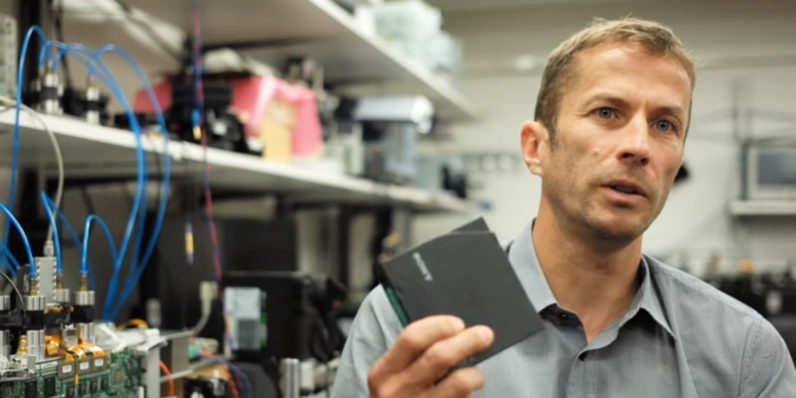
Sony has announced a new record for tape recording density. Together with IBM Research (Zurich), they achieved a density of 201 GB per square inch. This means that the tape in the standard TS1155 JD cartridge with a size of 109 × 125 × 24.5 mm will fit not the standard 15 TB, but 330 TB of information (taking into account the tape elongation by 6.4% due to a decrease in its thickness). What is 330 TB? For example, this is enough to hold 3,379 compressed copies of all Wikipedia (in all languages). Or 330 million books.
The joint achievement was made possible by an innovative magnetic tape, a new lubricant and precise positioning of the magnetic head.
Today, tape drives are the safest, energy-efficient and cheap method for long-term storage of large amounts of information. This is an ideal solution for backups and video archives, for storing information from radio telescopes and the Large Hadron Collider (in fact, they all have no other option than to store the collected data on tape cartridges). Now the tape finds a new use in Big Data and as a “cold” storage in data centers and cloud services.
IBM writes that now tape drives are experiencing their second youth, and with the new Sony film they will be relevant for a very long time. Although such a film with nanocoating will obviously be more expensive to manufacture than conventional tape coated with barium ferrite (BaFe).
The new tape consists of several layers of nanoparticles, and the technology of its production is somewhat similar to the manufacture of integrated circuits.
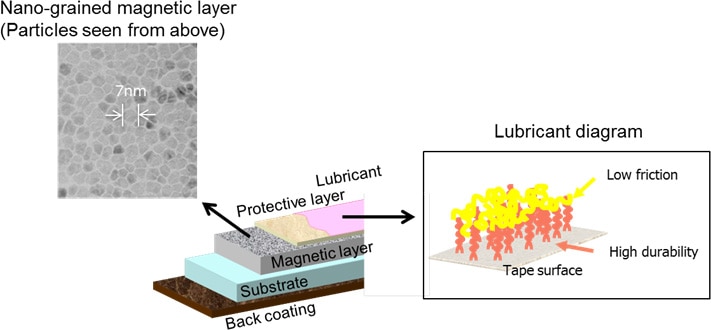
In more detail, the structure of the film can be examined under a transmission electron microscope (photo below).
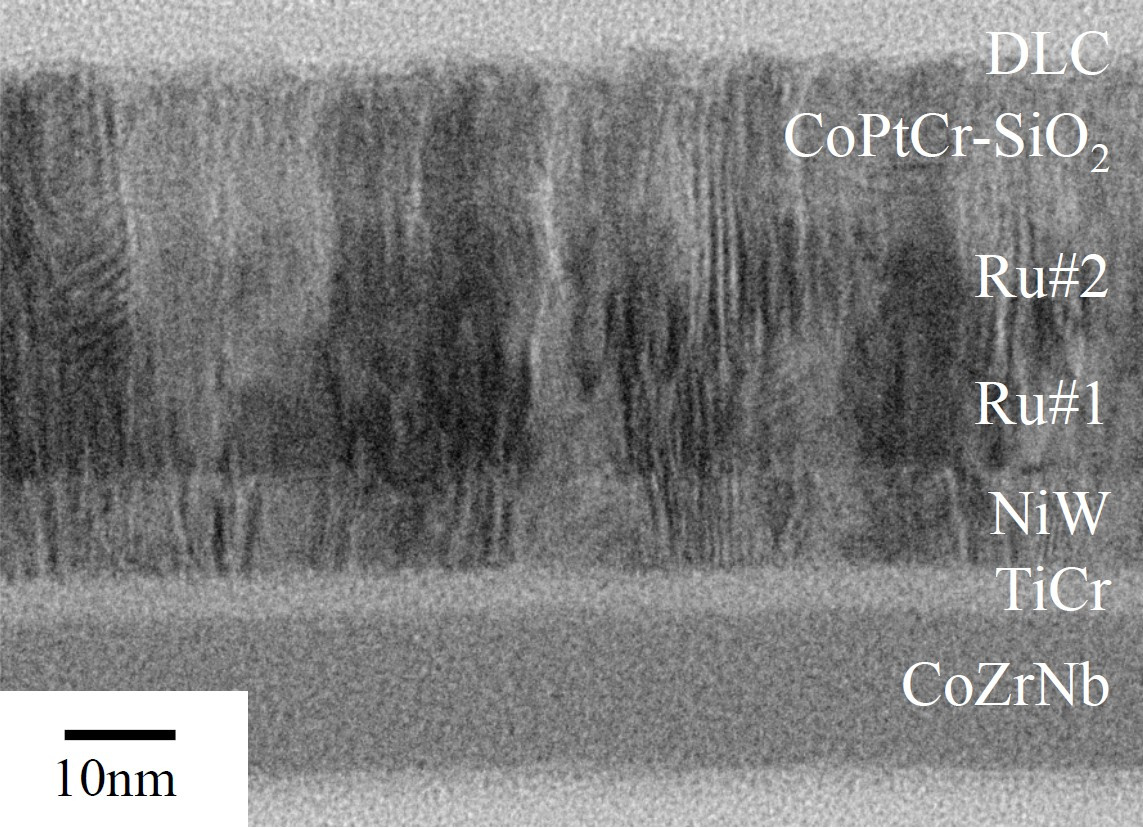
As you can see, the bottom layer of the soft CoZrNb substrate (14 nm), as well as the TiCr layer (2 nm) have an amorphous, chaotic structure, and then the most interesting begins. The next layer of the NiW substrate (10 nm), as well as intermediate film layers of ruthenium (this is one material, but it is applied under different conditions, so that two layers are formed) and the actual magnetic layer CoPtCr-SiO 2 (14 nm) consist of column-like groups of grains . That is why such a structure, similar to a honeycomb, is formed on the surface of the magnetic layer, as can be seen in the top photo (in the upper left corner). The width of each “cell” is about 7 nm.
In the end, on top of the magnetic layer is a reliable protection from a diamond-like carbon nanostructured coating (DLC) 5 nm thick.
All layers are applied on a polyamide base with a thickness of less than 5 microns. Actually, this is the thickness of this film.
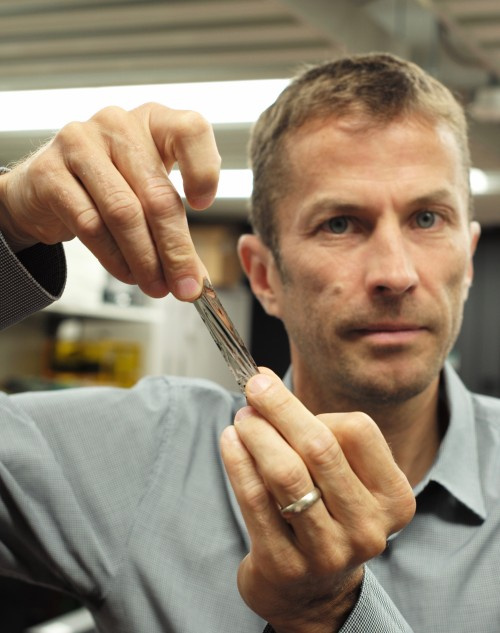
The following illustration schematically shows how these layers are applied in a vacuum chamber. The “roll-to-roll” method is used - a method of continuous feeding of the rolled material for deposition of materials with a thickness comparable to the size of an atom. The process takes place at room temperature.

Recording and reading information from such a film would have been impossible if it were not for the new lubricant, which was also developed by Sony. The fact is that for recording / reading information with such a density, a very large head sensitivity is needed, and therefore it should be extremely close to the tape. In the photo, the image of the head is almost merged with its reflection. The invented lubricant effectively reduces the friction between the magnetic head and the surface of the film, while it “sticks” tightly to the magnetic layer.
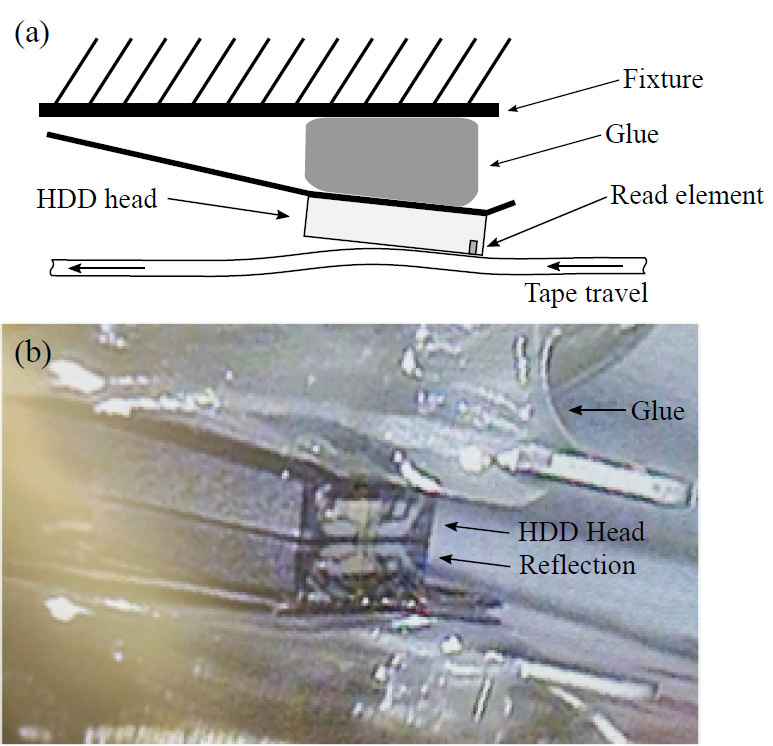
The role of IBM Research in this work was to develop signal processing algorithms taking into account the principles of noise detection and advanced servo control technologies for head positioning with a precision of 7 nm. Actually, the work of the magnetic head in this tape drive is almost entirely due to IBM Research.
What is most interesting, 330 terabytes is not the limit. In the video below, Dr. Mark Lantz from IBM Research says that in the future, the density of information on the tape can be further increased.
The presentation of the scientific work of Sony and IBM Research was held on August 2, 2017 at the Magnetic Recording Conference (doi: 10.1109 / TMAG.2017.2727822, pdf ).
All Articles